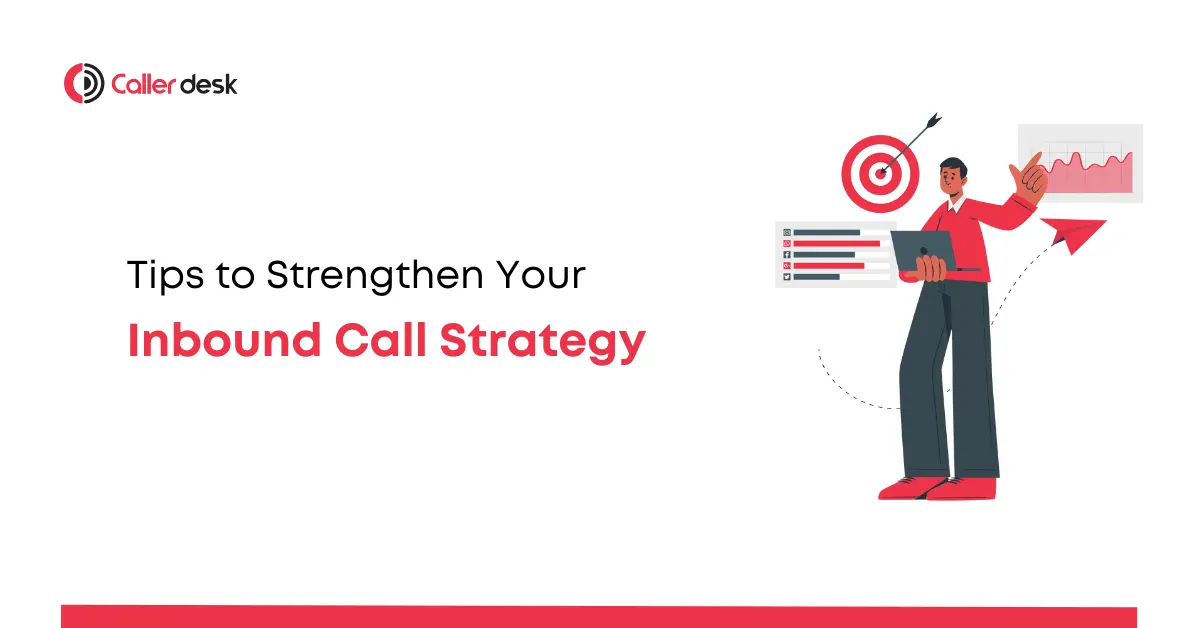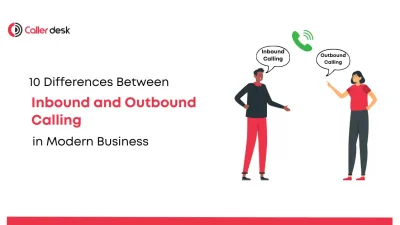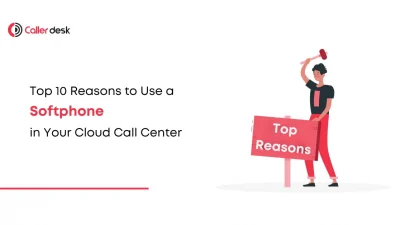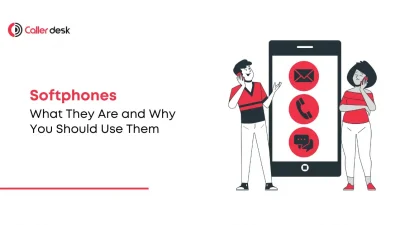Handling a high volume of customer calls is no easy feat, yet it’s a cornerstone of excellent customer service. A strong inbound call strategy isn’t just about answering calls; it’s about creating meaningful connections, resolving issues efficiently, and leaving customers with a positive impression. As businesses aim to exceed customer expectations, an optimized inbound call strategy becomes a vital tool for delivering seamless experiences and building long-term loyalty.
In this comprehensive guide, we’ll explore practical tips to elevate your inbound call management, from adopting cutting-edge technology to leveraging data insights. Let’s dive into actionable strategies to enhance customer satisfaction, boost efficiency, and improve team performance.
1. Adopt a Multichannel Communication Approach
Customers today expect more than just phone support. They want to interact with businesses on their terms—whether through email, live chat, social media, or SMS. Integrating multiple channels into a single, unified system ensures every customer interaction is managed seamlessly.
Why Multichannel Matters:
- Customer Convenience: Customers can choose their preferred method of communication.
- Centralized Interaction: Teams can view all customer queries and past interactions in one platform, providing better context for every call.
Example:
A global e-commerce company used CallerDesk’s omnichannel platform to integrate calls, emails, and live chat. The result? A 25% improvement in first-response times and a 30% increase in customer satisfaction.
Pro Tip: Use analytics to determine which channels are most popular among your customers and allocate resources accordingly.
2. Leverage Customer Data for Personalized Interactions
Personalized service is a game-changer in today’s competitive landscape. Customers appreciate when businesses understand their needs and provide tailored solutions.
How to Use Data for Personalization:
- Integrate with CRM Tools: Platforms like Salesforce or CallerDesk’s CRM integration allow agents to instantly access customer profiles, purchase history, and previous interactions.
- Segment Your Audience: Group customers based on their preferences, behaviors, or demographics to craft targeted responses.
Example:
A subscription service analyzed customer data to predict when users might need to upgrade their plans. By proactively addressing this in inbound calls, they boosted upsell conversions by 22%.
Pro Tip: Regularly clean and update your customer database to ensure accuracy and relevance.
3. Implement a Call Deflection Strategy
Not every inquiry needs a live agent. Automated tools like IVR (Interactive Voice Response) systems and AI-powered chatbots can handle repetitive queries, reducing agent workloads and ensuring priority is given to more complex issues.
Benefits of Call Deflection:
- Improved Efficiency: Simple queries like business hours or order tracking are resolved instantly.
- Reduced Wait Times: Agents are free to focus on critical calls, leading to shorter queues.
Example:
A logistics company implemented CallerDesk’s IVR to handle shipment tracking inquiries. This reduced live agent call volumes by 40% while maintaining customer satisfaction.
Pro Tip: Ensure your IVR menu is intuitive, with a clear option to speak to a live agent for complex issues.
4. Invest in Continuous Agent Training
Even the best technology won’t make up for poorly trained agents. Your team’s knowledge, empathy, and efficiency directly impact the quality of customer interactions.
Focus Areas for Training:
- Soft Skills: Teach active listening, empathy, and conflict resolution.
- Product Expertise: Ensure agents have in-depth knowledge of your offerings.
- Technology Proficiency: Familiarize agents with tools like CallerDesk’s call management features for seamless operations.
Example:
A telecom company implemented monthly training workshops focused on handling difficult customer interactions. This led to a 20% increase in first-call resolution rates.
Pro Tip: Use call recordings to identify training opportunities and highlight best practices.
5. Outsource Strategically to Manage Call Volumes
Handling peak call volumes or providing 24/7 support can strain internal resources. Strategic outsourcing allows businesses to scale operations without compromising quality.
Advantages of Outsourcing:
- Global Coverage: Provide support across time zones.
- Cost Efficiency: Focus on core operations while outsourcing repetitive tasks.
Example:
A fintech startup outsourced Tier 1 support tasks, allowing in-house teams to concentrate on high-value interactions. This resulted in faster resolution times and improved customer loyalty.
Pro Tip: Partner with providers that align with your brand’s values and service expectations.
6. Monitor and Analyze Key Metrics
Data-driven insights are essential for refining your inbound call strategy. Monitoring performance metrics helps identify strengths and pinpoint areas for improvement.
Key Metrics to Track:
- First Call Resolution (FCR): Measures the percentage of issues resolved in the first interaction.
- Average Handle Time (AHT): Tracks the time agents spend on calls and follow-ups.
- Call Abandonment Rate: Indicates the percentage of calls dropped before being answered.
- Customer Satisfaction (CSAT): Reflects overall satisfaction with your service.
Example:
A healthcare provider tracked FCR rates and identified common call resolution delays. Addressing these issues improved FCR by 18%, reducing repeat calls and enhancing patient satisfaction.
Pro Tip: Use dashboards and reporting tools to visualize metrics and share insights with your team.
7. Focus on Building Long-Term Customer Relationships
Inbound calls offer a golden opportunity to nurture customer relationships. By focusing on rapport and trust, businesses can convert one-time customers into loyal advocates.
How to Build Loyalty:
- Be Empathetic: Show genuine concern for the customer’s needs.
- Offer Tailored Solutions: Suggest personalized recommendations based on their history.
- Proactively Follow Up: Use tools like CallerDesk’s automated follow-ups to maintain ongoing engagement.
Example:
An insurance company improved policy renewals by 25% after implementing personalized follow-up calls post-claim resolution.
Pro Tip: Keep detailed notes on customer preferences to deliver consistent and personalized interactions.
8. Regularly Audit Your Inbound Call Strategy
Optimizing your inbound call strategy isn’t a one-time effort. Conduct regular audits to assess your system’s efficiency, agent performance, and customer satisfaction.
What to Analyze:
- Call Traffic Patterns: Identify peak hours and adjust staffing accordingly.
- Agent Workflows: Evaluate bottlenecks in call handling or resolution.
- Customer Feedback: Gather insights to refine your approach.
Pro Tip: Schedule quarterly reviews to ensure your strategy evolves with customer expectations.
Conclusion
A well-optimized inbound call strategy is key to delivering exceptional customer service. By adopting a multichannel approach, leveraging customer data, and integrating automation, businesses can enhance efficiency and satisfaction. Regular training, strategic outsourcing, and ongoing performance analysis ensure your team stays ahead of customer needs.
With CallerDesk’s advanced solutions, you can transform inbound call management into a seamless, customer-centric operation. From managing high call volumes to tracking key metrics, CallerDesk provides the tools you need to succeed. Contact us today for a free demo and discover how we can help you build a winning inbound call strategy!
Frequently Asked Questions
1. What is an inbound call strategy, and why is it important?
An inbound call strategy refers to the processes and systems businesses use to manage and respond to customer-initiated calls. It is essential because it ensures customer inquiries are handled efficiently, enhancing satisfaction, loyalty, and overall service quality.
2. How can multichannel communication improve inbound call strategies?
Multichannel communication allows businesses to integrate phone calls, emails, live chats, and social media into a single platform. This ensures agents have a comprehensive view of customer interactions, enabling faster, more personalized responses and improving the overall customer experience.
3. What tools can help manage customer data for better inbound call handling?
CRM (Customer Relationship Management) systems like Salesforce or tools integrated into platforms like CallerDesk provide agents with instant access to customer profiles, past interactions, and preferences. This data enables personalized and efficient service.
4. How does call deflection benefit inbound call centers?
Call deflection uses automated systems like IVR or chatbots to handle basic inquiries, such as business hours or FAQs. This reduces the workload for live agents, allowing them to focus on more complex calls while maintaining a high level of service.
5. What are the most important metrics for evaluating inbound call performance?
Key metrics include:
First Call Resolution (FCR): Measures how often customer issues are resolved on the first call.
Average Handle Time (AHT): Tracks how long agents spend on each call.
Call Abandonment Rate: Indicates the percentage of calls dropped before being answered.
Customer Satisfaction (CSAT): Gauges overall service quality based on customer feedback.
6. How can continuous agent training improve inbound call management?
Regular training ensures agents are updated on product knowledge, soft skills (like active listening and empathy), and tools used in call centers. This helps them handle inquiries effectively, resolve issues quickly, and maintain a positive customer experience.
7. When should a business consider outsourcing inbound call operations?
Outsourcing is ideal when your business experiences high call volumes, needs 24/7 support, or seeks cost-effective solutions to handle repetitive tasks. It allows businesses to scale operations while focusing on core activities.
8. What are the benefits of leveraging AI in inbound call strategies?
AI-powered tools like chatbots and predictive analytics streamline call routing, provide instant responses for basic queries, and predict customer needs based on past interactions. This enhances efficiency and improves customer satisfaction.
9. How does CallerDesk improve inbound call strategies?
CallerDesk offers features like omnichannel integration, automated call routing, real-time analytics, and CRM integration. These tools help businesses manage high call volumes, track performance metrics, and deliver personalized customer experiences.
10. What steps can businesses take to build long-term relationships through inbound calls?
Show empathy and actively listen to customer needs.
Provide tailored solutions and personalized recommendations.
Follow up after resolving issues to ensure customer satisfaction.
Maintain consistent, high-quality service to foster trust and loyalty.





